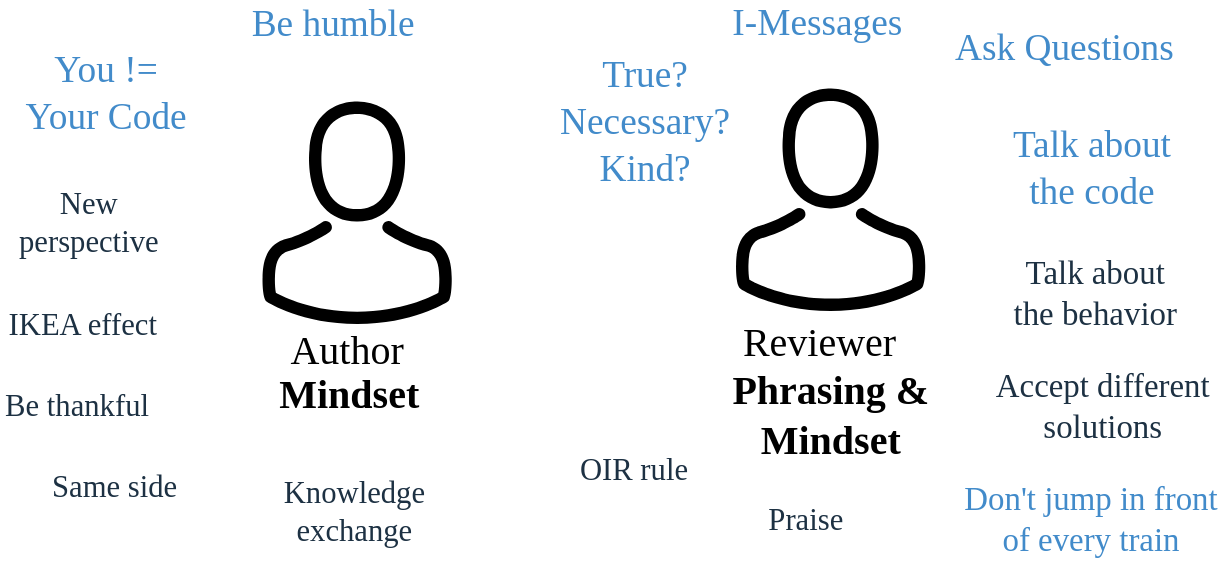🔍 The Art of Code Reviews: Why They Matter and How to Master Them
🔍 The Art of Code Reviews: Why They Matter and How to Master Them
Code reviews are an essential part of modern software development. They’re not just about catching bugs — they’re about building better teams, improving code quality, and fostering a culture of collaboration. 🌟
In this blog, we’ll explore:
- What are Code Reviews?
- Why Code Reviews Are Crucial
- How to Conduct Effective Code Reviews
- Examples to Illustrate the Process

📖 What Are Code Reviews?
A code review is the process where one or more developers examine another developer’s code changes before they are merged into the main codebase. Think of it as a safety net that ensures the code is:
- Clear and maintainable ✍️
- Free from bugs or potential issues 🐛
- Aligned with the team’s coding standards 🎯
Code reviews also serve as a collaborative learning opportunity, where team members can share knowledge, mentor one another, and keep the codebase in excellent shape.
🌟 Why Are Code Reviews Crucial?
1. Ensure Code Quality 🛠️
Code reviews help catch errors, inefficiencies, or bad practices before they reach production. Early detection saves time, money, and frustration.
Example:
Imagine a function that calculates the total price of an item with tax:
def calculate_total(price, tax_rate)
price * tax_rate
endA reviewer might point out:
- What if
tax_rateisnil? - Should this method handle invalid inputs?
With their input, the improved version could look like this:
def calculate_total(price, tax_rate = 0.1)
return 0 if price.nil?
price * tax_rate
end2. Encourage Knowledge Sharing 📚
Reviews expose team members to different coding styles, patterns, and techniques, helping everyone improve.
Example:
A reviewer could teach a junior developer about using ||= for memoization in Ruby:
# Before review
def expensive_operation
@result = heavy_computation
@result
end
# After review
def expensive_operation
@result ||= heavy_computation
end3. Improve Team Collaboration and Standards 🤝
Code reviews align team members with shared coding standards, making the codebase consistent and easier to work with.
Example:
A review might enforce using const over let in JavaScript for variables that don’t change, creating a uniform approach throughout the project.
4. Reduce Technical Debt 💸
By encouraging clean and maintainable code, reviews prevent the accumulation of shortcuts or poorly written code that could cause issues in the future.
💡 How to Conduct Effective Code Reviews
1. Understand the Context 🎯
Before diving into the code, read the related ticket, user story, or documentation. Understand why the changes were made.
Checklist Before Reviewing:
- Does the code meet the requirements?
- Is the logic clear and correct?
- Are edge cases handled properly?
2. Be Kind and Constructive 🤗
The goal is to improve the code, not criticize the person. Your feedback should be constructive and focused on the code.
Instead of:
❌ “This code is a mess. Rewrite it.”
Say:
✅ “This works, but consider refactoring to make it easier to read and maintain.”
3. Focus on Readability and Maintainability 📖
Ask yourself:
- Is the code easy to understand?
- Will it be easy for someone else to modify in the future?
Example:
# Before review
def full_name(user)
"#{user.first_name} #{user.last_name}"
end
# After review
def full_name(user)
[user.first_name, user.last_name].compact.join(" ")
endThis refactor gracefully handles cases where first_name or last_name might be nil.
4. Run the Code Locally 🖥️
Whenever possible, pull the changes and test them yourself. Look for edge cases or unexpected behavior.
5. Use Tools for Assistance 🔧
Automated tools can help ensure that the code adheres to formatting and style guidelines.
- Static Analyzers: RuboCop (Ruby), ESLint (JavaScript), etc.
- Automated Tests: Ensure all tests pass before approving changes.
🔧 Code Review in Action: An Example
Pull Request: Add User Authentication
Code Submitted:
def authenticate_user(email, password)
user = User.find_by(email: email)
return false unless user
if user.password == password
return user
else
return false
end
endReviewer Feedback:
1. Security Issue:
“Storing plain-text passwords is insecure. Use a library like bcrypt to hash and compare passwords."
2. Simplify Logic:
“Avoid multiple return statements. Consider a more concise approach.”
Refactored Code:
def authenticate_user(email, password)
user = User.find_by(email: email)
user if user&.authenticate(password)
end3. User Experience Suggestion:
“If the email doesn’t exist, avoid exposing this to the user. Return a generic error message instead.”
🏆 Best Practices for Code Reviews
- Timebox Your Reviews: Spend no more than 60–90 minutes to avoid burnout.
- Use Checklists: Have a set of questions to guide your review (e.g., Is the code testable? Does it follow team conventions?).
- Foster a Growth Mindset: Approach reviews as a learning opportunity for both the author and the reviewer.
🚀 Conclusion
Code reviews are much more than a formality — they’re a critical process for building high-quality software and strong teams. They improve code quality, enhance team collaboration, and create a culture of shared ownership.
Ready to level up your code reviews? Share your thoughts or tips below! Let’s build better software together. ✨
Comments
Post a Comment